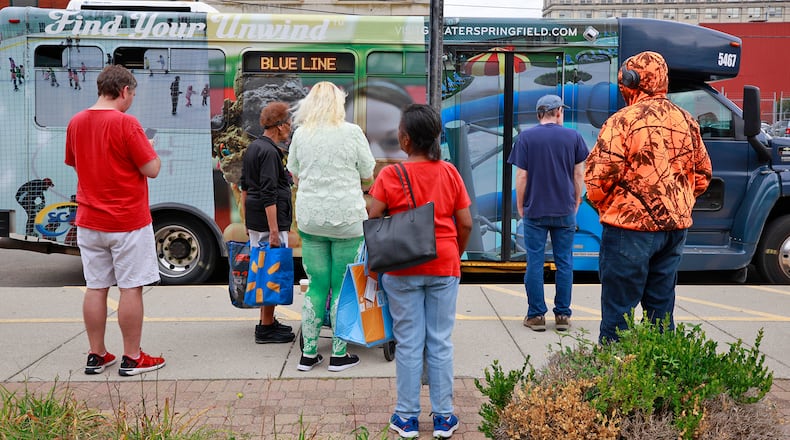While a number of vendors expressed interest in the proposed conversion of Springfield City Area Transit (SCAT) from a traditional fixed route bus schedule using big buses to an on-demand service using vans, the city’s initial request for bids came up empty-handed.
“We are debriefing and looking at next steps,” Via reports. “A primary concern for vendors is the unknown — it’s hard to submit a bid with a set budget when there’s no precedent. It’s understandable.”
City officials may need to fine-tune the Request for Proposals used for competitive bids, but in the meantime, city bus services continue to serve customers with regularly scheduled routes in the community.
Via says the pause in the action is enabling those working on the project to expand their understanding of what riders want and need, and to tap into additional resources to refine the project moving forward.
Since announcing the proposed redesign of local transit, those who use the current system have shown interest and gotten involved in the process by sharing how and when they use the system, what works for them and what doesn’t.
“Bus users are not just people making trips back and forth to work. We’ve learned there’s a subset of people who are ‘superusers.’ They rely on the bus system for multiple trips over the course of a day,” Via said. “As an example, one person regularly uses the bus to visit a family member in a retirement home daily. Some days she may add in a stop for grocery shopping and then return to the retirement home before returning to her own home.”
Credit: Bill Lackey
Credit: Bill Lackey
While he was waiting on a SCAT bus last week, Kelly McCormick said he worried people wouldn’t understand the change-over to an on-demand system. He worried it would result in higher prices, and he predicted usage would drop because people wouldn’t know how to arrange a ride.
“I depend on the buses when I don’t have a car. That gets me everywhere,” McCormick said. “And there are a lot of people out here who are in worse situations than I am.”
In addition to insights being gained from current users, there is ongoing research and collaboration with some other Ohio communities who have already successfully revamped transit services.
One transit service that has gained traction in a number of Ohio communities is NEOride, originally formed in 2014 by three Ohio-based transit companies, that has become a growing multi-state alliance of more than 30 urban, suburban and rural public transit systems.
According to the NEOride website, there are currently 12 Ohio counties listed as rural transit members, as well as major Ohio cities including Cleveland, Cincinnati, Columbus, Dayton and Toledo.
NEOride members leverage buying power in procuring services and products, participate in a coordinated mobile ticketing app that includes transit systems across four states, and benefit from a streamlined service tailored to address para-transit needs.
Greene County’s Greene CATS Public Transit operates two types of service — flex routes primarily in Xenia, Fairborn and Beavercreek that have defined streets and scheduled times, plus an on-demand, door-to-door service. Two years ago, Greene CATS eliminated weekend service and revised other offerings because of a driver shortage, financial issues, and declining ridership.
Via says another resource that may be of assistance is the Ohio Department of Transportation, which has recently added a position specifically dedicated to “assisting small urban transit systems like ours.”
Despite the delay in the process, Via says the city continues to move forward applying for and accessing state and federal funding that will help fund city transit efforts in the future.
City Commissioners recently approved a measure that would match $221,000 in city funding to $884,000 from the Federal Transit Administration for preventive maintenance of vehicles and ADA para-transit planning. Another recently passed measure secured $70,000 in state funding for vehicle preventive maintenance.
Via predicts the city will benefit in the long run from the temporary pause in transforming city transit operations.
“If it’s worth doing, it’s probably not going to be easy. We want to do it right and set it up for success. Patience will serve us well.”
Credit: Bill Lackey
Credit: Bill Lackey


